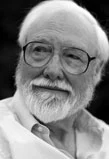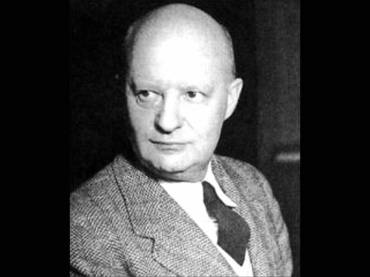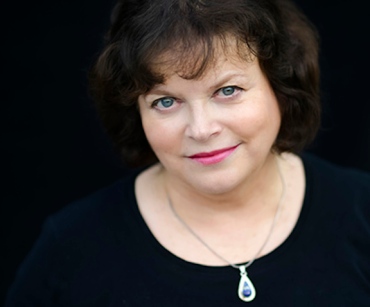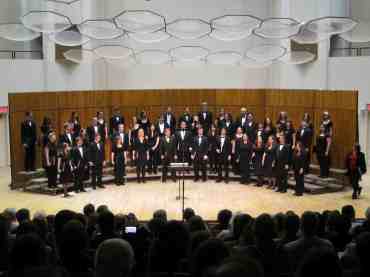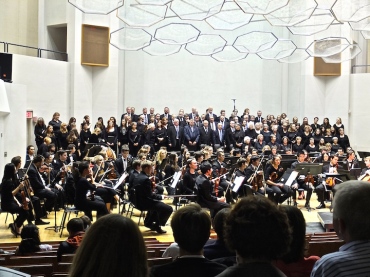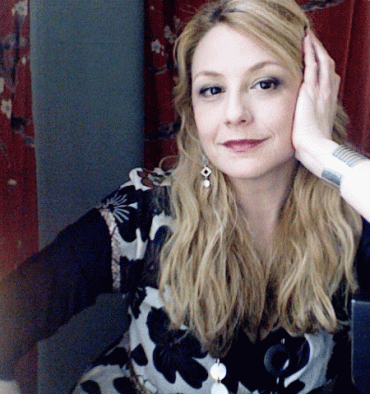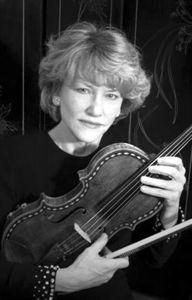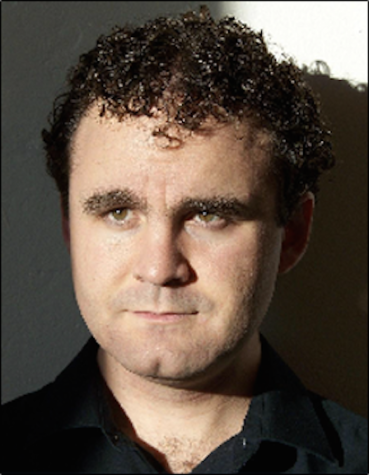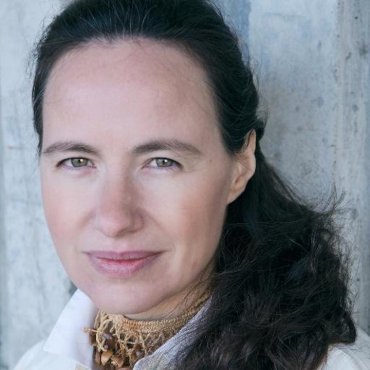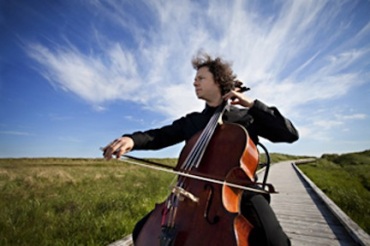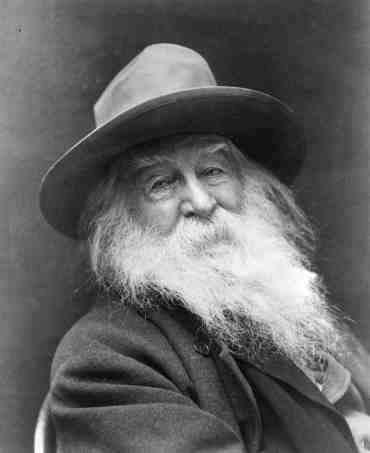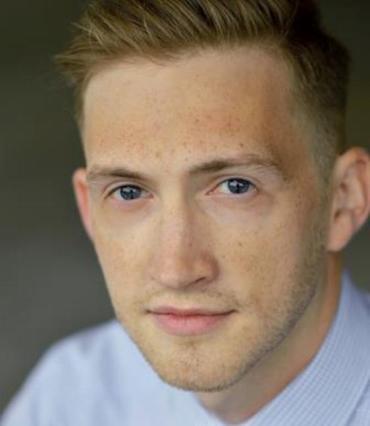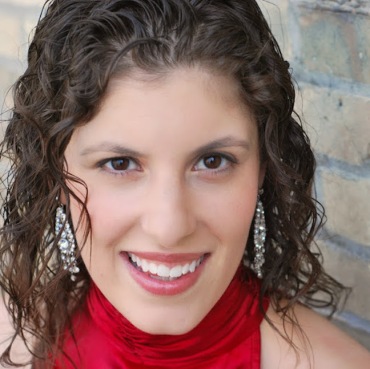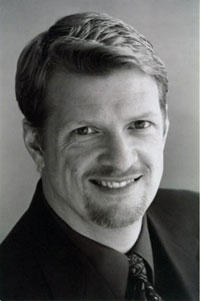The Well-Tempered Ear
Classical music: This Sunday afternoon at Farley’s, pianist Shai Wosner performs sonatas by Beethoven, Schubert, Scarlatti and Rzewski. On Saturday afternoon, he gives a FREE public master class
1 Comment
PLEASE HELP THE EAR. IF YOU LIKE A CERTAIN BLOG POST, SPREAD THE WORD. FORWARD A LINK TO IT OR, SHARE IT or TAG IT (not just “Like” it) ON FACEBOOK. Performers can use the extra exposure to draw potential audience members to an event. And you might even attract new readers and subscribers to the blog.
ALERT and CORRECTION: Earlier this week, The Ear mistakenly said the concert by UW Concert Band is Wednesday night. He apologizes for the error.
It is TONIGHT at 7:30 p.m. in the Mead Witter Foundation Concert Hall of the new Hamel Music Center, 740 University Ave. In addition, the School of Music website has updated information about the program to be played under director and conductor Corey Pompey. Go to: https://www.music.wisc.edu/event/uw-concert-band-3/
By Jacob Stockinger
This coming Sunday afternoon, one of the today’s most interesting and creative concert pianists will return to Madison to make his solo recital debut.
His name is Shai Wosner (below, in a photo by Marco Borggreve) and he is an Israeli-American who is acclaimed for his technique, his tone and his subtle interpretations.
But what also makes Wosner especially noteworthy and one of the most interesting musical artists performing today is his eclectic, thoughtful and inventive approach to programming.
For more information about Wosner, go to his home website: http://www.shaiwosner.com
Wosner returns to Madison to perform his first solo recital here at 4 p.m. this coming Sunday afternoon, Feb. 23, on the Salon Piano Series at Farley’s House of Pianos, at 6522 Seybold Road, on Madison’s far west side near West Towne Mall.
Born in Israel and now teaching in Boston while touring, Wosner will play sonatas by Beethoven, Scarlatti, Rzewski and Schubert.
He has performed with orchestras throughout the U.S. and Europe, and records for Onyx Classics. “His feel for keyboard color and voicing is wonderful,” said The Washington Post.
The Madison program is: Beethoven’s Sonata No. 15 in D Major (“Pastoral”), Op. 28; Scarlatti’s Sonata in D minor, K. 141, Allegro, with Rzewskis’ Nanosonata No. 36 (“To A Young Man”); Scarlatti’s Sonata in D minor, K. 9, Allegro, with Rzewski’s Nanosonata No. 38 (“To A Great Guy”); Scarlatti’s Sonata in C minor, K. 23, with Rzewski’s Nanosonata No. 12; and Schubert’s last Sonata in B-flat Major, D. 960.
An artist’s reception will follow the concert.
Tickets are $45 in advance (students $10) or $50 at the door. Service fees may apply. Tickets are also for sale at Farley’s House of Pianos. Call (608) 271-2626.
Student tickets can only be purchased online and are not available the day of the event.
To purchase tickets, go to: https://www.brownpapertickets.com/producer/706809
For more information about Wosner’s FREE public master class at 4:30 p.m. on Saturday, Feb. 22, including the names of local students and their teachers plus the titles of works by Mozart, Debussy and Ravel to be played, go to: https://salonpianoseries.org/concerts.html
Wosner (below) recently did an email Q&A with The Ear:
In concerts and recordings, you like to mix and intersperse or alternate composers: Brahms and Schoenberg; Haydn and Ligeti; Schubert and Missy Mazzoli; and Beethoven, Schubert, Chopin, Liszt, Dvorak, Ives and Gershwin. Why do you pair sonatas by Domenico Scarlatti (1685-1757) and the American composer Frederic Rzewski (1938-) in this program?
I like to pair together composers from very different periods in ways that, hopefully, bring out certain things they have in common in spite of the differences.
Perhaps it is a way of looking for the underlying principles that make music work, for the ideas that go beyond styles and time periods and that stimulate composers across centuries.
In the case of Scarlatti (below top) and Rzewski (below bottom), it is the extreme conciseness of their sonatas and also their almost impulsive kind of writing with ideas and twists and turns kept unpredictably spontaneous, almost in the style of stream-of-consciousness.
Their sonatas are closer to the literal meaning of the word – “a piece that is played” as opposed to sung (which was more common in Scarlatti’s time perhaps). They are also very much about treatment of the keyboard and gestural writing rather than the more essay-type sonatas that were the dominant idiom for Beethoven and Schubert.
Why did you pick these particular sonatas by Beethoven and Schubert to bookend the program?
The sonata by Beethoven (below top) is quite unusual for him, without many contrasts and very lyrical, which perhaps is a certain parallel with the Schubert sonata. (You can hear Wosner playing an excerpt from another Beethoven sonata in the YouTube video at the bottom.)
But they are also very different. Beethoven’s sonata looks around it and is about idyllic nature — the title “Pastoral” isn’t by Beethoven but it is written in that kind of style — and the sonata by Schubert (below bottom) is more introspective, perhaps about human nature.
What would you like the public to know about specific works and composers on your Madison program?
I think it’s always stimulating to challenge preconceptions we have about composers.
Beethoven is often associated with a certain “heroic” style and bold, dramatic gestures while this piece is quite understated in many ways.
Schubert’s last sonata is often seen as a farewell to the world. But at the same time Schubert himself may not have been aware of his impending death as much as we think – he made some plans right near the end that may suggest otherwise.
I prefer to let everyone find in this music what they will, of course. But I think these works reveal other aspects of these composers that we don’t always think of. Is Schubert’s piece really about his own tragedy? It is probably much broader than that.
Now that your acclaimed Schubert project is completed, what are your current or upcoming projects?
I am currently working with five other composers on a project that is a collection of five short pieces written as “variations” for which the theme is a quote from a 1938 speech by FDR: “remember, remember always, that all of us… are descended from immigrants and revolutionists.”
Each composer chose a figure of an immigrant — some famous, some not — to write about. The composers are Vijay Iyer, Derek Bermel (below top), Anthony Cheung, Wang Lu and John Harbison (below bottom).
These “variations” will be paired with Beethoven’s “Diabelli” Variations.
What else would you like to say about your career and, after several concerto appearances with the Wisconsin Chamber Orchestra, about your solo recital debut in Madison?
Madison has a lovely audience that I was fortunate to meet in the past, and I certainly look forward to being back there!
Tags: #AmericanComposer, #AmericanMusic, #AmericanOrchestras, #AnthonyCheung, #AntoninDvorak, #ArnoldSchoenberg, #BandMusic, #BlogInterview, #BlogPost, #BlogPosting, #BostonMassachusetts, #BrownPaperTickets, #CharlesIves, #ClaudeDebussy, #CommissionedMusic, #ConcertBand, #ContemporaryComposer, #ContemporaryMusic, #CoreyPompey, #CriticallyAcclaimed, #DerekBermel, #DiabelliVariations, #DomenicoScarlatti, #EclecticMusic, #FacebookPost, #FacebookPosting, #Farley'sHouseofPianos, #FranklinDelanoRoosevelt, #FranzJosephHaydn, #FranzLiszt, #FranzSchubert, #FredericChopin, #FredericRzewski, #GyorgyLigeti, #HamelMusicCenter, #HomeWebsite, #HumanNature, #JohannesBrahms, #JohnHarbison, #LudwigVanBeethoven, #LyricalMusic, #MarcoBorggreve, #MauriceRavel, #MeadWitterFoundationConcertHall, #MeadWitterSchoolofMusic, #MissyMazzoli, #MusicalArtist, #MusicalInterpretation, #MusicalStyle, #MusicCommission, #NanoSonata, #NewMusic, #NewsUpdate, #OnyxClassics, #PastoralSonata, #PianoConcert, #PianoConcerto, #PianoMusic, #SalonPIanoSeries, #ShaiWosner, #Stream-of-Consciousness, #Sundayafternoon, #TheEar, #TheGoldenDoor, #ThemeAndVariations, #TheWashingtonPost, #UniversityofWisconsin-Madison, #UWConcertBand, #VijayIyer, #WangLu, #WestTowneMall, #WisconsinChamberOrchestra, #WolfgangAmadeusMozart, #YoungMan, #YouTubevideo, advance, afternoon, alert, alternate, American, Anthony Cheung, Antonín Dvořák, apologize, appearance, approach, Arnold Schoenberg, artist, Arts, audience, aware, band music, Baroque, Beethoven, Bermel, blog, bold, bookend, Boston, Brahms, Brown Paper Tickets, career, centuries, challenge, Charles Ives, Cheung, Chopin, Classical music, classicalmusic, Claude Debussy, color, commission, common, Compact Disc, composer, Concert, Concert Band, concerto, conciseness, consciousness, contemporary, contrast, Corey Pompey, correction, creative, critically acclaimed, death, Debussy, debut, Derek Bermel, descend, descended, Diabelli Variations, difference, Domenico Scarlatti, dominant, door, dramatic, Dvorak, Early music, eclectic, email, end, essay, Europe, everyone, excerpt, extreme, Facebook, familiar, famous, farewell, Farley's House of Pianos, FDR, find, fortunate, forward, Franklin D. Roosevelt, Franklin Delano Roosevelt, Franz Joseph Haydn, Franz Liszt, Franz Schubert, Frédéric Chopin, Frederic Rzewski, free, George Gershwin, georgegershwin, Gershwin, gestural, great, guy, György Ligeti, Hamel Music Center, Harbison, Haydn, heroic, Home, human nature, idea, idiom, idyllic, immigrants, impulsive, information, interesting, interpretation, intersperse, interview, introspective, inventive, Israel, Israeli, Israeli-American, Ives, Iyer, Jacob Stockinger, Johannes Brahms, John Harbison, Keyboard, last, let, Ligeti, like, link, Liszt, literal, look, lovely, Lu, Ludwig van Beethoven, lyrical, Madison, Marco Borggreve, master class, masterclass, Maurice Ravel, Mazzoli, Mead Witter Foundation Concert Hall, Mead Witter School of Music, meaning, Missy Mazzoli, Mozart, Music, musical artist, name, nano, nature, New Music, noteworthy, online, Onyx Classics, Orchestra, pair, parallel, past, Pastoral Sonata, performer, period, periods, Pianist, Piano, pieces, plans, played, playing, preconceptions, prefer, principle, program, programming, project, public, purchase, Q&A, Ravel, recital, remember, revolutionists, Roosevelt, Salon Piano Music, Scarlatti, Schoenberg, Schubert, Shai Wosner, share, short, solo, Sonata, speech, spontaneous, stimulate, Student, style, subtle, Sunday, sung, tag, Teacher, teaching, technique, The Ear, The Washington Post, theme, theme and variations, thoughtful, tickets, time, together, tone, tour, touring, tragedy, treatment, turns, twists, type, U.S., underlying, understated, United States, University of Wisconsin-Madison School of Music, University of Wisconsin–Madison, unusual, update, UW Concert Band, UW-Madison, variations, Vijay Iyer, voicing, Wang Lu, Website, west side, West Towne Mall, Wisconsin, Wisconsin Chamber Orchestra, Wolfgang Amadeus Mozart, working, world, writing, young man, YouTube
Classical music: UW Choral Union and UW Symphony Orchestra resurrect Paul Hindemith’s long-neglected 20th-century secular Requiem with fine singing and committed playing
Leave a Comment
By Jacob Stockinger
Here is a special posting, a review written by frequent guest critic and writer for this blog, John W. Barker. Barker (below) is an emeritus professor of Medieval history at the University of Wisconsin-Madison. He also is a well-known classical music critic who writes for Isthmus and the American Record Guide, and who hosts an early music show once a month on Sunday morning on WORT FM 89.9 FM. For years, he served on the Board of Advisors for the Madison Early Music Festival and frequently gives pre-concert lectures in Madison. He also took the performance photographs below.
By John W. Barker
It is unusual that, within the space of a few days, we have parallel performances of two very untraditional Requiems, ones setting vernacular texts rather than liturgical Latin ones.
The UW Choral Union and UW Symphony(below) performed Paul Hindemith’s “When Lilacs Last in the Dooryard Bloom’d: A Requiem For those we love” last weekend. And the Madison Symphony Chorus and Orchestra will give us Johannes Brahms’ Ein deutsches Requiem (A German Requiem) this coming weekend, May 5-7.
(NOTE: Here is a link with more information about the three MSO performances this coming weekend:
It is hard to resist the temptation to compare them.
They were, of course, composed about a century apart, in the contexts of very different stylistic eras. They reflect very different aesthetics: High Romantic warmth for Brahms, conservative modernism for Hindemith.
The different texts chosen also determine crucial differences. Brahms selected Luther’s German translations of passages from Scripture, as a broad collage of human consolation and solace, whereas the German-born Hindemith, a naturalized American citizen who fled from Hitler’s Nazism, in a patriotic commemoration of the death of President Franklin Delano Roosevelt, chose the long poem of grieving that Walt Whitman (below) wrote over the death of President Abraham Lincoln.
The relatively concise Scriptural texts allowed Brahms to develop rich melodic and contrapuntal elaborations. Hindemith’s determination to set Whitman’s complete poem, of 208 verses in altogether irregular free verse, committed him to keep things in constantly moving continuity, with little chance for pausing and elaborating.
To be sure, Hindemith (below) was never a distinguished lyricist, for all his skills, so his writing is endless declamation by the soloists, backed by strongly cast choral statements. (You can hear famed baritone Dietrich Fischer-Dieskau and the chorus sing the opening of the Hindemith requiem in the YouTube video at the bottom.)
There are many lovely and powerful moments, but they pass by quickly and leave little of memorable expressiveness. There is much clever music here, but in sum total it is more dutiful than beautiful.
The performance in Mills Hall — I heard the one Sunday night — showed a stage packed with musicians. There were two soloists, a chorus of exactly 100 singers, and an orchestra (the UW Symphony) of 67 players, 46 of them on strings. UW choral director and conductor Beverly Taylor (below) drew from all of them deeply committed musical results.
Of the two soloists, soprano Jennifer D’Agostino (below left) sang with beauty and expression, but it was baritone James Held (below right) who stole the show, with a ringing voice, superb diction, and a genuine eloquence.
The huge chorus was quite magnificent, well unified, fully serious in its enunciation, and capable of some truly musical sound — and Hindemith, though nowhere near Brahms as a choral composer, gave them some serious challenges. The orchestra sounded a bit rough at the very beginning, but settled into participating strongly in the performance.
Whatever reservations one may have about Hindemith’s score, this Whitman Requiem, one of his last important works and premiered in 1946, is a significant piece. It is far less frequently heard than that by Brahms, and so it is very good that UW choral director Beverly Taylor has brought it to our attention.
Tags: A German Requiem (Brahms), Abraham Lincoln, American, American Record Guide, Arts, baritone, Beverly Taylor, blog, choral music, citizen, Classical music, collage, composer, conservative, consolation, counterpoint, critic, declamation, Dietrich Fischer-Dieskau, Early music, expressiveness, FDR, Franklin D. Roosevelt, Franklin Delano Roosevelt, free verse, German, History, Hitler, Isthmus, Jacob Stockinger, Johannes Brahms, John DeMain, John W. Barker, Latin, Latin America, lecture, liturgical, liturgy, lyric, lyricist, Madison, Madison Early Music Festival, Madison Symphony Orchestra, Medieval, melody, MEMF, memorable, modernism, Music, Nazi, Nazism, Paul Hindemith, photo, photographs, poet, Poetry, poiem, President, professor, Requiem, resurrect, reviewer, Romantic, sacred, secular, solace, soloist, soprano, symphony, United States, University of Wisconsin-Madison School of Music, University of Wisconsin–Madison, UW Choral Union, UW Symphony Orchestra, vernacular, verse, vocal music, Walt Whitman, WORT-FM 89.9, writing, YouTube
Classical music: The UW Concert Choir, Choral Union and Symphony Orchestra will perform world premieres, local premieres and new music in three concerts this weekend
1 Comment
By Jacob Stockinger
The Ear has received the following messages from UW composer Laura Schwendinger and from Beverly Taylor, the director of choral activities at the University of Wisconsin-Madison School of Music who is also the assistant conductor and chorus director of the Madison Symphony Orchestra:
Writes conductor Beverly Taylor: This is a busy and musically fascinating weekend for me coming up.
On Friday night at 8 p.m. in Mills Hall, there is a special concert by the Concert Choir (below) on the subject of Art Born of Tragedy, with the acclaimed guest cellist Matt Haimovitz.
Tickets are $15, $5 for students. For more information about tickets as well as the performers and the program, go to:
http://www.music.wisc.edu/event/uw-concert-choir-4-matt-haimovitz/
Then in Mills Hall at 8 p.m. on Saturday night and at 7:30 p.m. on Sunday night, there are two performances of When Lilacs Last in the Dooryard Bloomed by the 20th-century composer Paul Hindemith by the UW Choral Union and the UW Symphony Orchestra (below). It is a work that to my knowledge has never been performed in Madison.
Tickets are $15, $8 for students. For more information about obtaining tickets and about the concert, visit:
http://www.music.wisc.edu/event/uw-choral-union-uw-symphony-orchestra/
Here is more information about the events:
CONCERT CHOIR
The Concert Choir performance explores in music of several centuries the theme of “Art Born of Tragedy” — how outside events can be the spark that causes the creation of works of substance that range from the gentle and comforting to rage and despair.
We will sing music from the Renaissance: part of the Thomas Tallis’ “Lamentations of Jeremiah (on the ancient destruction of Jerusalem),” and a John Wilbye madrigal “Draw on Sweet Night for a Broken Heart.”
We will present three works from modern composers: one is a world premiere by the prize-winning composer Laura Schwendinger (below top), my colleague at the UW-Madison, for viola — played by Sally Chisholm (below bottom) of the UW Pro Arte Quartet — and wordless chorus. It is called “For Paris” in memory of those killed in the Paris terrorist bombings of 2015.
(Adds composer Laura Schwendinger: “The viola starts this short work by referencing only for a moment the merest idea of a ‘musette song,’ one that might be heard on an evening in a Paris cafe. The choir enters with a simple refrain that repeats again and again, each time with a little more material, as an unanswered question of sorts. Each time the viola reenters the texture, the music becomes more pressing in a poignant manner, until it arrives in its highest register, only to resolve with the choir as it quietly acquiesces in the knowledge that the answer may not be known.”)
We will present a short “O vos omnes” (O you who pass by) written by Pennsylvania composer Joseph Gregorio (below), composed in memory of a Chinese girl hit by a car and left to die.
The third piece is a reprise of “Après moi, le deluge” by Luna Pearl Woolf (below top), which we premiered and recorded 11 years ago. We are lucky to have back the wonderful internationally known cellist Matt Haimovitz (below bottom), who premiered this work with it. The text, written by poet Eleanor Wilner, mixes the Noah story with the Hurricane Katrina disaster.
The term “Après moi, le deluge” is a term attributed to Louis XV or his mistress Madame Pompadour, and means “after me the flood” — referring either to the chaos after his reign, or that what happens afterword bears no importance for him.
The work has four different moods like a symphony — with strong themes at the start and cries for help, followed by the slow movement despair, a scherzo-like depiction of havoc, and a final movement that is like a New Orleans funeral, upbeat and Dixieland.
Throughout the program we also present spirituals that depict loneliness or salvation from trouble.
UW CHORAL UNION
In certain ways, When Lilacs Last in the Dooryard Bloomed resembles the Concert Choir concert in that it contains a number of moods and styles as well, under a dark title. The subtitle of the work is “a Requiem for Those We Love.”
It was commissioned by the great choral and orchestral conductor Robert Shaw as a tribute to President Franklin Delano Roosevelt on his death and the train ride that carried him from Warm Springs, Georgia, to Washington, D.C.
The text that Paul Hindemith (below top) chose is by Walt Whitman (below bottom), who wrote his poem on the death of Abraham Lincoln, and the funeral train from Washington, D.C., to Springfield, Illinois.
Whitman’s grief is combined with pride and joy in the countryside that the train traverses, and his feelings find an outlet in the thrush that sings out its song. His sense of a sustaining universe is a contrast to his depiction of the despair and ravages of the Civil War.
Hindemith’s calling the work a “Requiem for Those We Love,” puts it, like the Brahms’ “German” Requiem, into a class of non-liturgical requiems — that is, the texts are not those that are part of the Catholic Mass for the Dead, but are other selected texts of joy or remembrance.
Hindemith’s style can loosely be described as tonal that veers away into dissonance and returns again to the home key. The Prelude and opening movement are dark; the solo songs of baritone (James Held, below top) and mezzo-soprano (Jennifer D’Agostino, below bottom) are marvelous; the fugue on the glories of America is glorious and other sections are soft and tender. (NOTE: You can hear the orchestral prelude of the work, with composer Paul Hindemith conducting the New York Philharmonic, in the YouTube video at the bottom.)
The work is hard for both chorus and orchestra, but well worth the effort. The piece is about 80 minutes long and will be performed without interruption. It’s a work I’ve always wanted to do, having heard it performed at Tanglewood many years ago. I’m delighted to have the chance now.
Tags: 20th-century, Art, Arts, auto, baritone, Beverly Taylor, born, cafe, car, Catholic, Chamber music, chaos, China, Chinese, Choir, choral music, Choral Union, chorus, Civil War, Classical music, comfort, composer, Concert Choir, conductor, D.C., dead, despair, dissonance, Dixieland, Early music, Eleanor Wilner, FDR, Franklin Delano Roosevelt, fugue, funeral, gentle, Georgia, grief, heart, Hurricane, Hurricane Katrina, ILLINOIS, Jacob Stockinger, James Held, Jennifer D'Agostino, Jeremiah, Jerusalem, John Wilbye, Joseph Gregorio, Joy, Kartrina, lamentation, Laura Schwendinger, Lincoln, liturgical, liturgical music, Louis XV, Love, Madame Pompadour, Madison, Madison Symphony Orchestra, madrigal, mass, Matt Haimovitz, Mezzo-soprano, musette, Music, New Music, New Orleans, New York Philharmonic, Orchestra, Paris, Paul Hindemith, Pennsylvania, poet, Prelude, premiere, President, Pro Arte Quartet, rage, ravages, reign, remembrance, Renaissance, Requiem, Requiem Mass, Robert Shaw, Scherzo, song, Springfield, symphony, symphony orchestra, Tanglewood, Tanglewood Festival, terror, terrorist, Thomas Tallis, tonal, tragedy, train, United States, universe, University of Wisconsin-Madison School of Music, University of Wisconsin–Madison, UW, Viola, Violin, vocal music, Walt Whitman, Warm Springs, Washington, When Lilacs Last in the Dooryard Bloomed, Wisconsin, world premiere, YouTube
Classical music: Wednesday marked 60 years since contralto Marian Anderson became the first African American soloist at the Metropolitan Opera.
1 Comment
By Jacob Stockinger
Today is a good day to think about the American singer Marian Anderson (below).
Maybe you think that opera is progressive, or at least more progressive than, say, orchestras or societies at large.
Do you think that the famed Metropolitan Opera (below, in its newer building at Lincoln Center) in ethnically diverse New York City has been especially progressive and pioneering?
Well, think again.
Maybe in some things.
But not in race relations.
Here is a story from NPR (National Public Radio) about the 60th anniversary of the debut of contralto Marian Anderson’s at the Met. She was the first African American soloist to appear at the Met.
And that was on Jan 7, 1955.
That appearance came almost 20 years after she performed the historic 1939 outdoor recital (below) on the steps of the Lincoln Memorial in Washington, D.C. That event, done to great critical acclaim and before a huge public crowd, came about because First Lady Eleanor Roosevelt, with the help of President FDR, procured permission for Anderson to sing at the memorial after the Daughters of the American Revolution denied Anderson the use of Constitution Hall because of her race. It was broadcast nationally on the radio.
At the Met, Anderson performed the role of the sorceress Ulrica (below, from the photo archives at the Met) in “Un ballo in maschera” (A Masked Ball) by Giuseppe Verdi.
Anyway, the 60th anniversary celebration of that historic Met performance came this past week, on Wednesday.
Here is the NPR story that even has sound snippets of Anderson’s singing:
And here is a YouTube video of Marian Anderson singing at the Lincoln Memorial that was broadcast as part of a series by public television or PBS on its Newshour:
Tags: African American, Arts, black, Classical music, Daughters of the American Revolution, Eleanor Roosevelt, FDR, Jacob Stockinger, LIncoln Center, Lincoln Memorial, Met, Metropolitan Opera, Music, New York City, NPR, opera, PBS, PBS Newshour, public television, race, race relations, Radio, Un ballo in maschera, Verdi, vocal music, YouTube
Classical music: Art and politics do mix, and music can fight racism. That is why we mark the 75th anniversary of black singer Marian Anderson’s historic concert at the Lincoln Memorial in Washington, D.C.
1 Comment
REMINDERS: Today at 10 a.m. and 3 p.m., the lovely Requiem by Gabriel Faure will be performed at the First Unitarian Society of Madison, 900 University Bay Drive. Free-will donations will be accepted. For more information and background, see the link below. Also, at 7:30 p.m in Mills Hall, the University of Wisconsin-Madison School of Music‘s group Chorale will perform a FREE concert under conductor Bruce Gladstone (below in a photo by Katrin Talbot).
By Jacob Stockinger
Do art and politics mix?
Can music fight racism?
Maybe definitive answers can’t really be offered.
But The Ear thinks YES and says here is a reminder of what social and political action be achieved through music.
It is a story about the 75th anniversary of contralto Marian Anderson’s famous and historic concert (below top, in a photo from the University of Pennsylvania) on the steps of the Lincoln Memorial because the singer (below bottom), who was African-American, had been denied use of Constitution Hall by the Daughters of the American Revolution. Eleanor Roosevelt helped procure the appropriate public venue for her, and FDR’s Secretary of the Interior Harold Ickes delivered a rousing and populist liberal introduction that you can hear at the bottom in a YouTube video, along with her opening song.
Be sure to check out the crowd on that showed up to hear Marian Anderson on that 1939 Easter weekend, and also look at the many Reader Comments on the YouTube post. This concert made a difference.
It is a fine and inspiring story with some little known information, including how the singer changed the lyrics to the well-known patriotic song “My Country, T’is of Thee” to be more inclusive. She was anything but bitter and spiteful, which is more than you can say about her opponents then and now. And readers in the Madison area should know that Marian Anderson did indeed perform locally at the Wisconsin Union Theater on the University of Wisconsin-Madison campus.
This story was broadcast on NPR and was reported by Susan Stamberg (below), the famed and beloved longtime anchor of “All Things Considered,” who these who these days in her retirement seems to do a lot of feature stories about the arts in her hometown of Washington, D.C.:
http://www.npr.org/2014/04/09/298760473/denied-a-stage-she-sang-for-a-nation
Tags: Arts, choral music, chorus, Classical music, contralto, DAR Constitution Hall, Daughters of the American Revolution, Eleanor Roosevelt, FDR, First Unitarian Society of Madison, Franklin Delano Roosevelt, Gabriel Fauré, Harold Ickes, Jacob Stockinger, Lincoln, Lincoln Memorial, Madison, Marian Anderson, Music, NPR, patriotic, patriotism, Politics, racism, Requiem, Secretary of the Interior, singer, social action, song, Susan Stamberg, The President, University of Pennsylvania, University of Wisconsin-Madison School of Music, University of Wisconsin–Madison, vocal music, Washington DC, Wisconsin Union Theater, YouTube
- May 2024
- April 2024
- March 2024
- February 2024
- January 2024
- December 2023
- November 2023
- October 2023
- September 2023
- August 2023
- July 2023
- June 2023
- May 2023
- April 2023
- March 2023
- February 2023
- January 2023
- December 2022
- October 2022
- September 2022
- June 2022
- May 2022
- April 2022
- March 2022
- July 2021
- June 2021
- May 2021
- April 2021
- March 2021
- February 2021
- January 2021
- December 2020
- November 2020
- October 2020
- September 2020
- August 2020
- July 2020
- June 2020
- May 2020
- April 2020
- March 2020
- February 2020
- January 2020
- December 2019
- November 2019
- October 2019
- September 2019
- August 2019
- July 2019
- June 2019
- May 2019
- April 2019
- March 2019
- February 2019
- January 2019
- December 2018
- November 2018
- October 2018
- September 2018
- August 2018
- July 2018
- June 2018
- May 2018
- April 2018
- March 2018
- February 2018
- January 2018
- December 2017
- November 2017
- October 2017
- September 2017
- August 2017
- July 2017
- June 2017
- May 2017
- April 2017
- March 2017
- February 2017
- January 2017
- December 2016
- November 2016
- October 2016
- September 2016
- August 2016
- July 2016
- June 2016
- May 2016
- April 2016
- March 2016
- February 2016
- January 2016
- December 2015
- November 2015
- October 2015
- September 2015
- August 2015
- July 2015
- June 2015
- May 2015
- April 2015
- March 2015
- February 2015
- January 2015
- December 2014
- November 2014
- October 2014
- September 2014
- August 2014
- July 2014
- June 2014
- May 2014
- April 2014
- March 2014
- February 2014
- January 2014
- December 2013
- November 2013
- October 2013
- September 2013
- August 2013
- July 2013
- June 2013
- May 2013
- April 2013
- March 2013
- February 2013
- January 2013
- December 2012
- November 2012
- October 2012
- September 2012
- August 2012
- July 2012
- June 2012
- May 2012
- April 2012
- March 2012
- February 2012
- January 2012
- December 2011
- November 2011
- October 2011
- September 2011
- August 2011
- July 2011
- June 2011
- May 2011
- April 2011
- March 2011
- February 2011
- January 2011
- December 2010
- November 2010
- October 2010
- September 2010
- August 2010
- July 2010
- June 2010
- May 2010
- April 2010
- March 2010
- February 2010
- January 2010
- December 2009
- November 2009
- October 2009
- September 2009
- August 2009
Archives
- 2,491,496 hits
Blog Stats
Recent Comments
| Brian Jefferies on Classical music: A major reass… | |
| welltemperedear on What made Beethoven sick and… | |
| rlhess5d5b7e5dff on What made Beethoven sick and… | |
| welltemperedear on Beethoven’s Ninth turns 200… | |
| Robert Graebner on Beethoven’s Ninth turns 200… |
Tags
#BlogPost #BlogPosting #ChamberMusic #FacebookPost #FacebookPosting #MeadWitterSchoolofMusic #TheEar #UniversityofWisconsin-Madison #YouTubevideo Arts audience Bach Baroque Beethoven blog Cello Chamber music choral music Classical music Compact Disc composer Concert concerto conductor Early music Facebook forward Franz Schubert George Frideric Handel Jacob Stockinger Johannes Brahms Johann Sebastian Bach John DeMain like link Ludwig van Beethoven Madison Madison Opera Madison Symphony Orchestra Mead Witter School of Music Mozart Music New Music New York City NPR opera Orchestra Overture Center performer Pianist Piano post posting program share singer Sonata song soprano String quartet Student symphony tag The Ear United States University of Wisconsin-Madison School of Music University of Wisconsin–Madison Viola Violin vocal music Wisconsin Wisconsin Chamber Orchestra wisconsin public radio Wolfgang Amadeus Mozart YouTube









